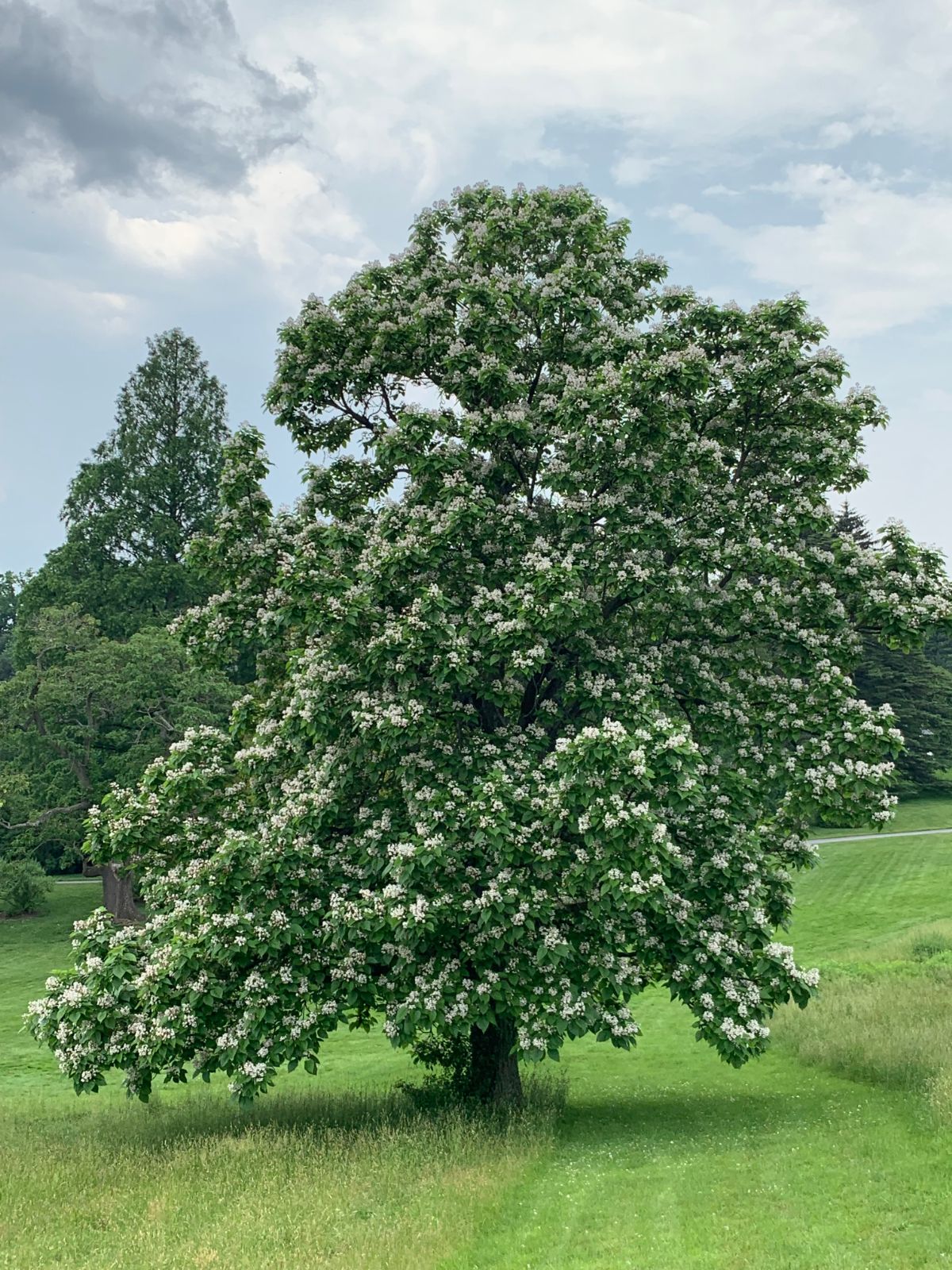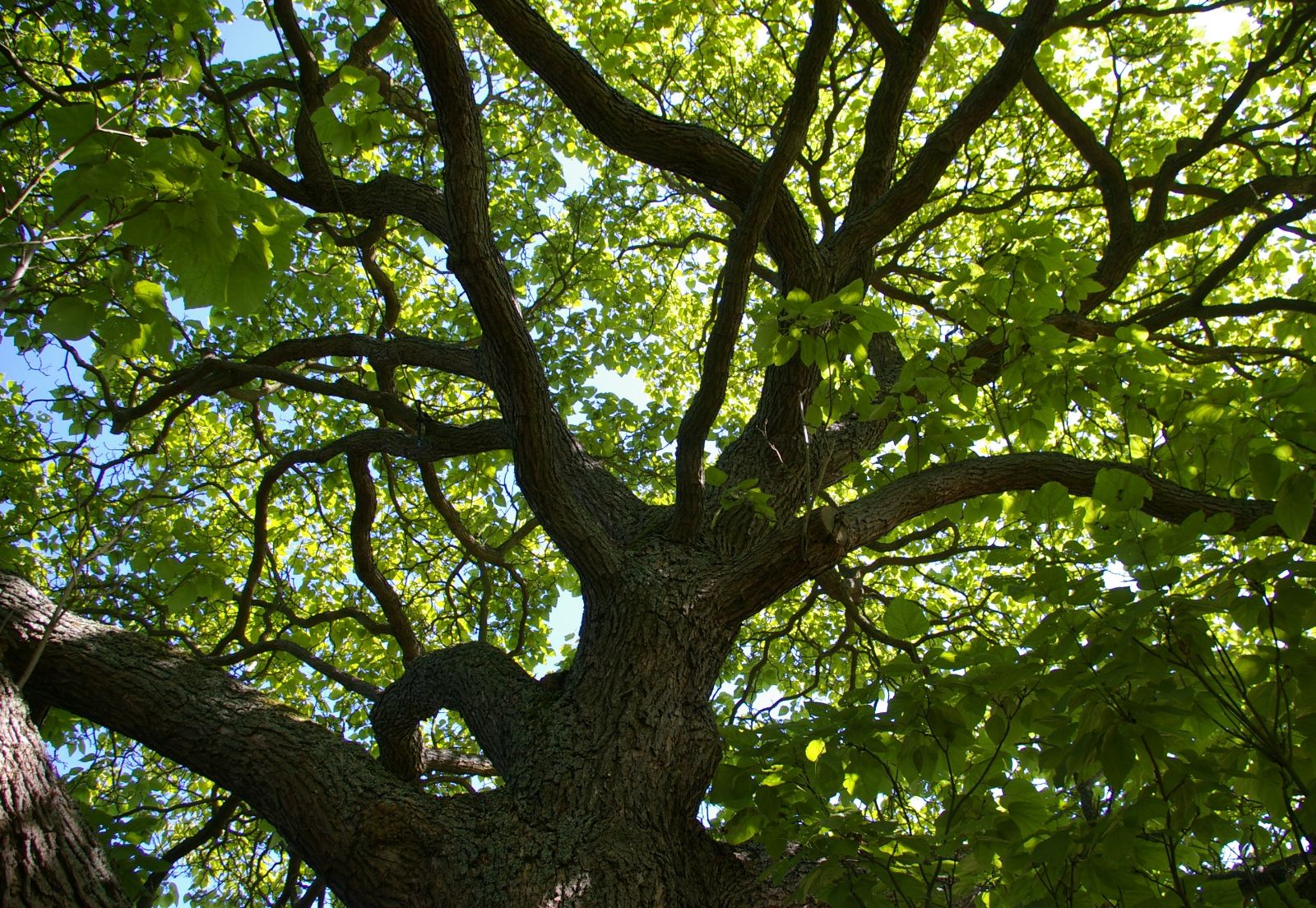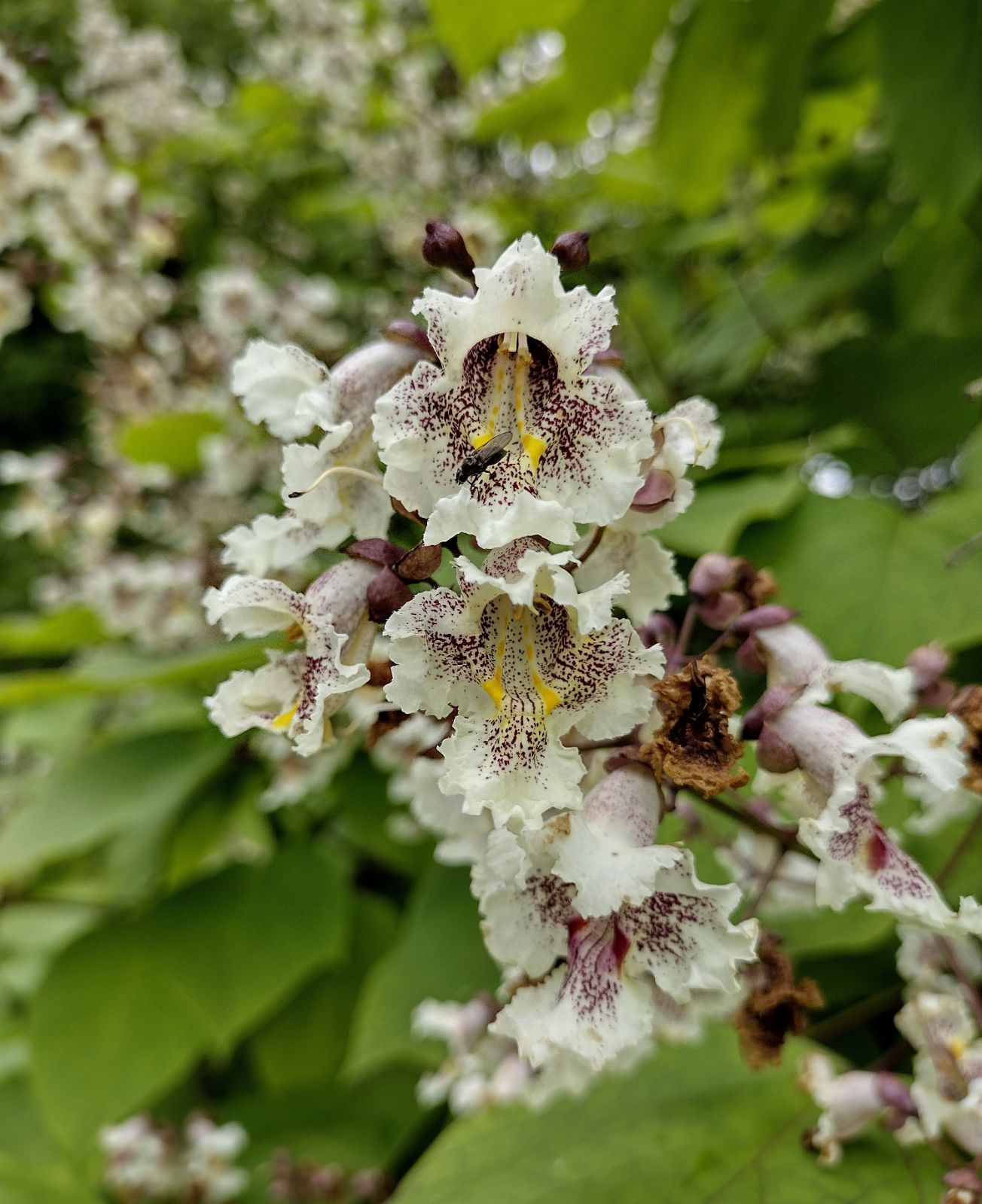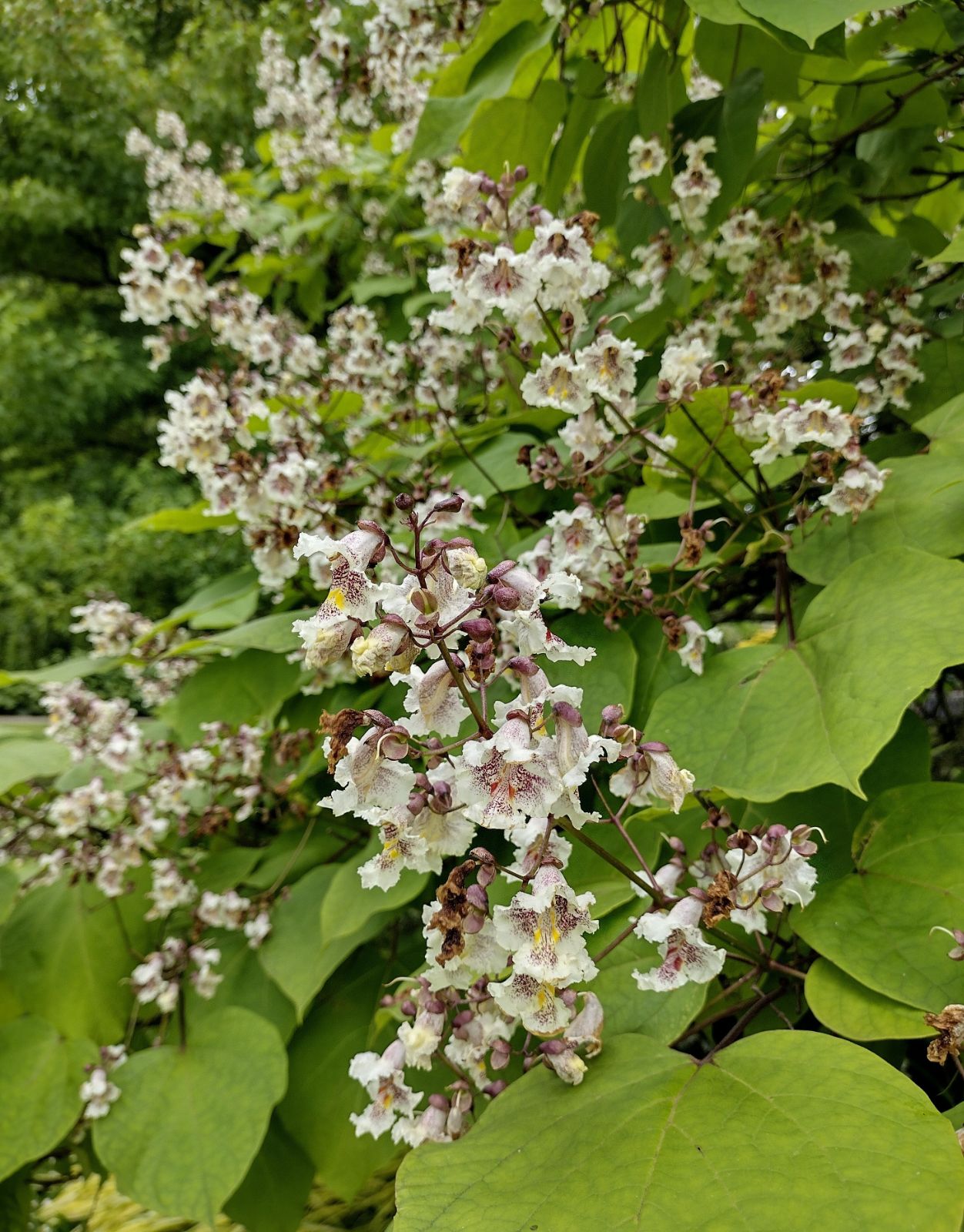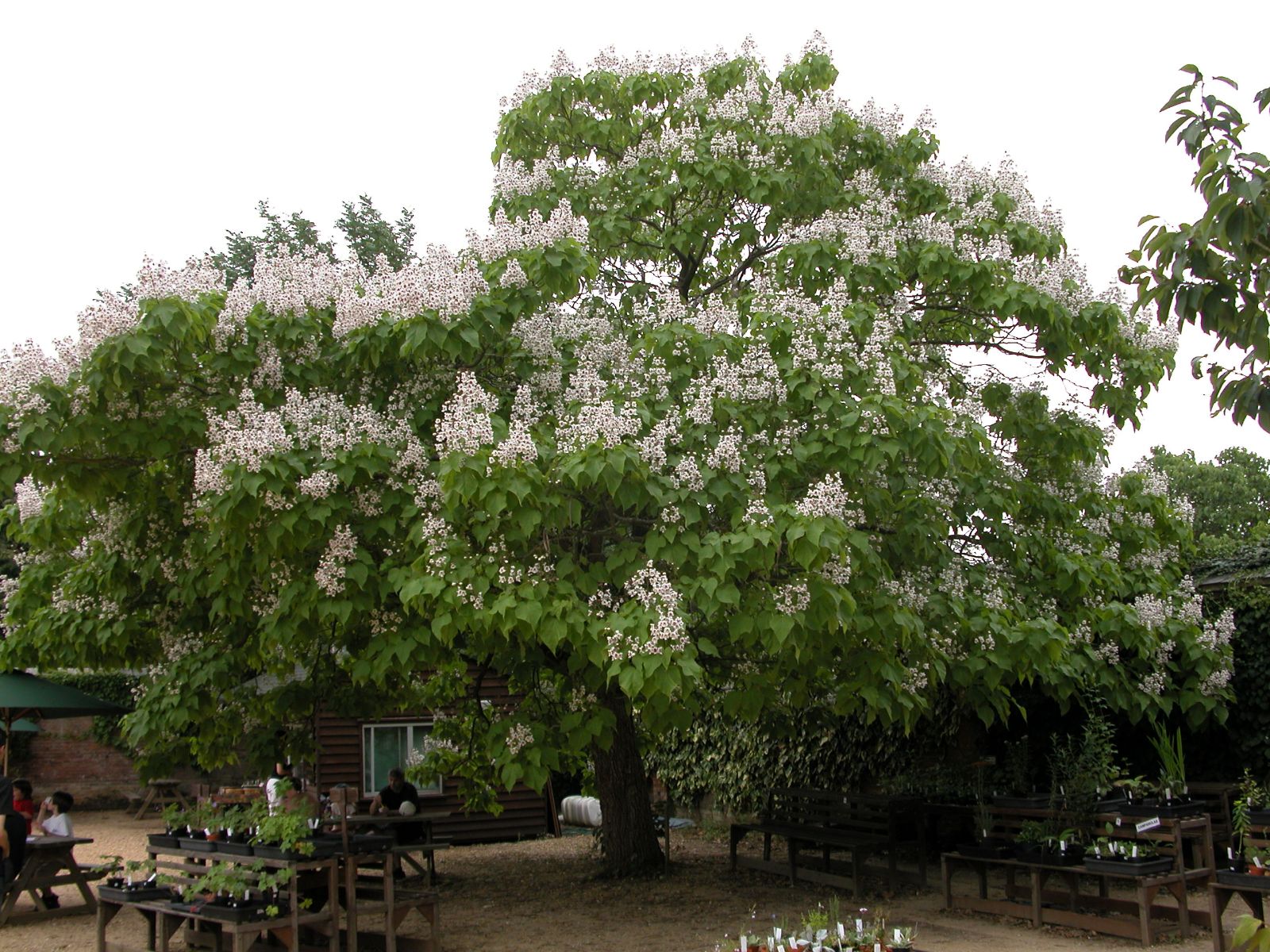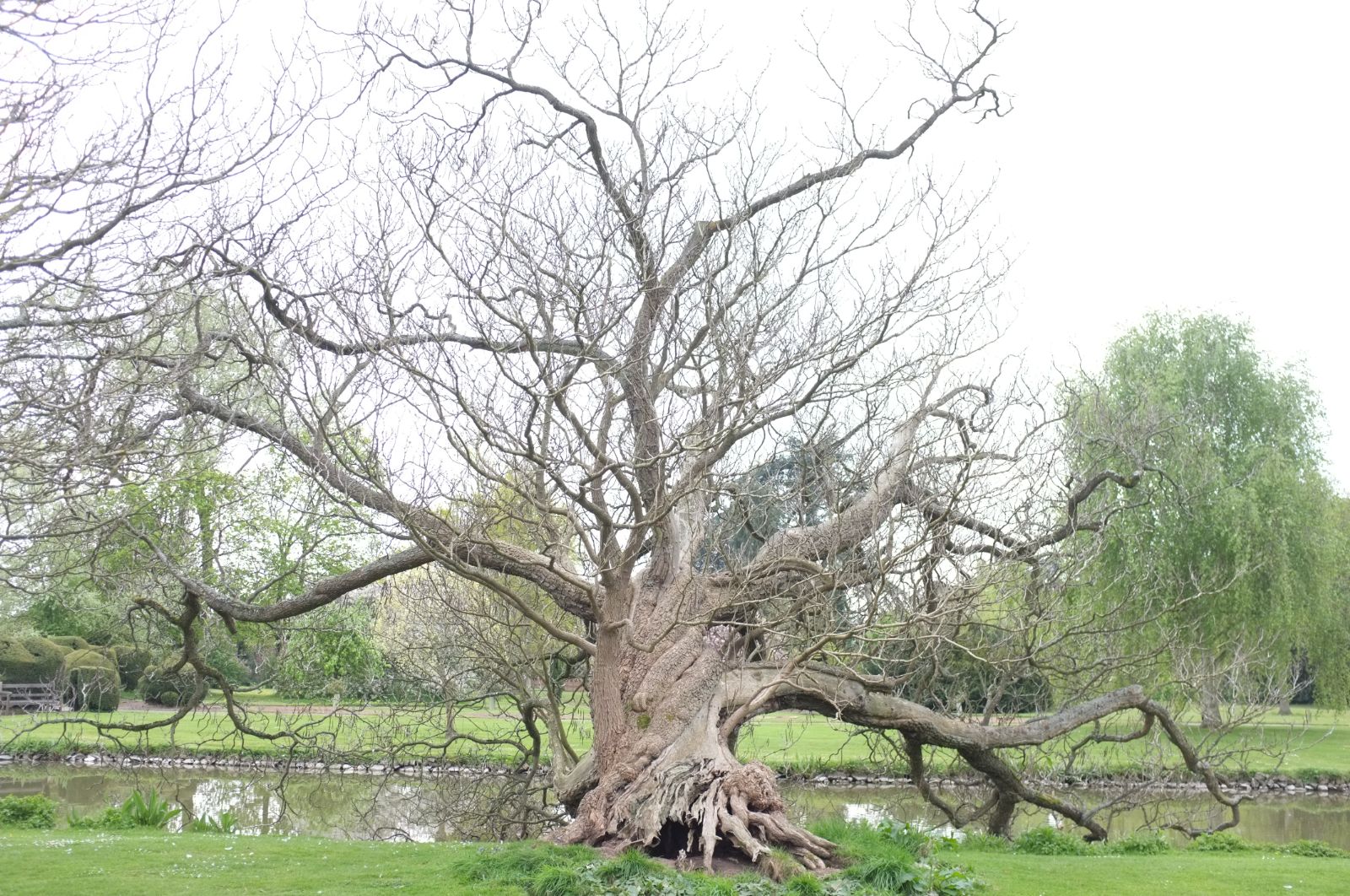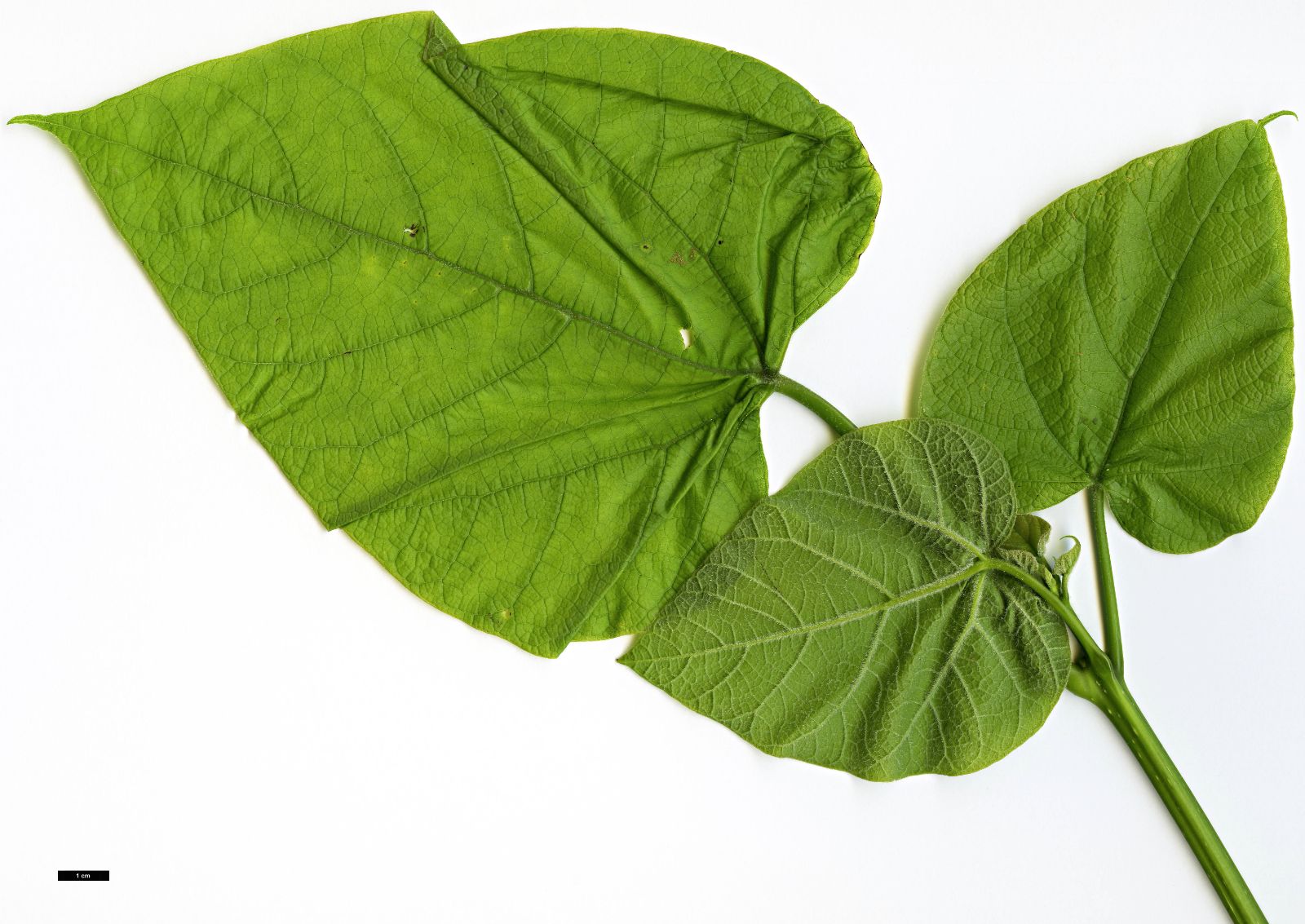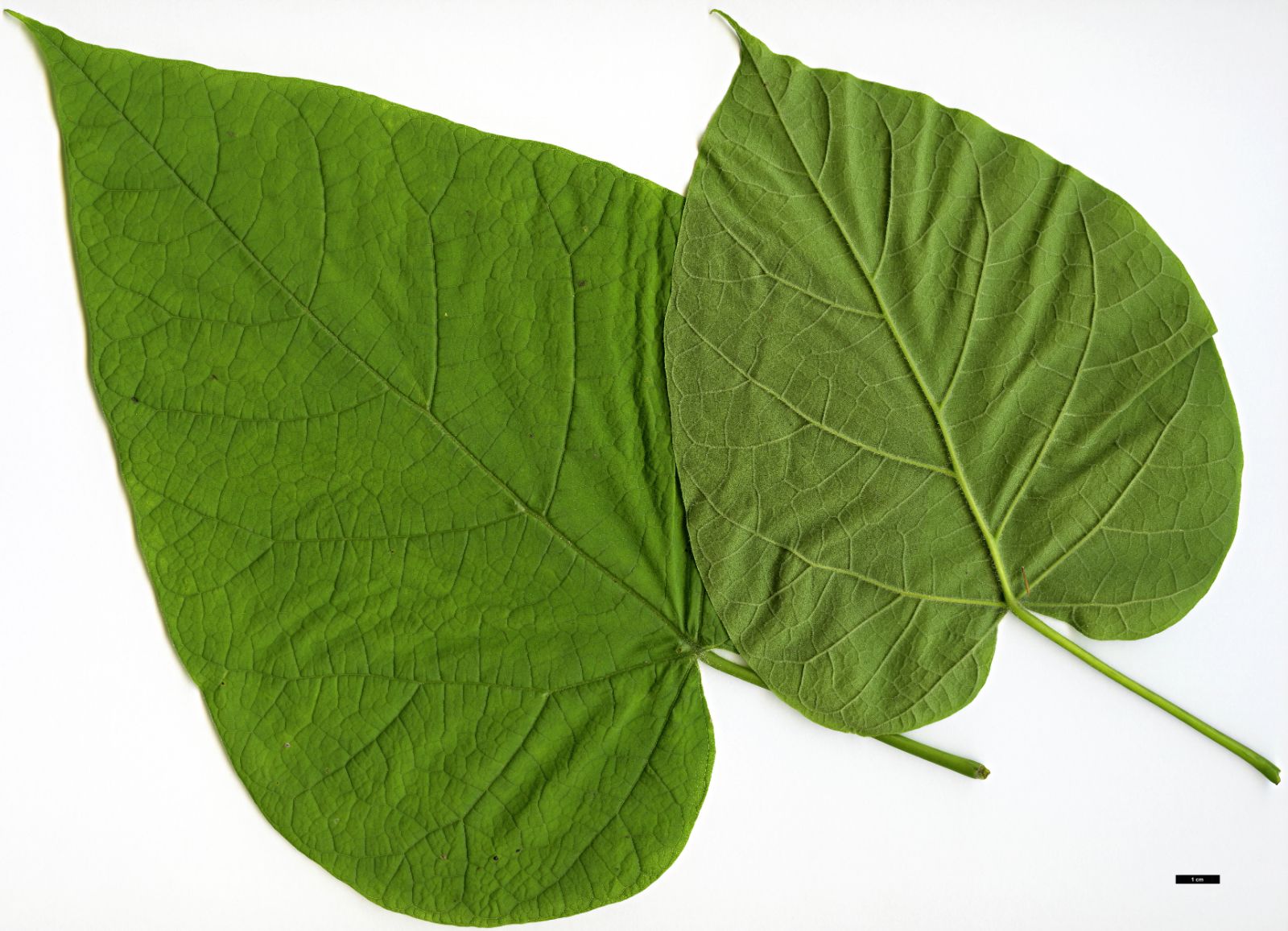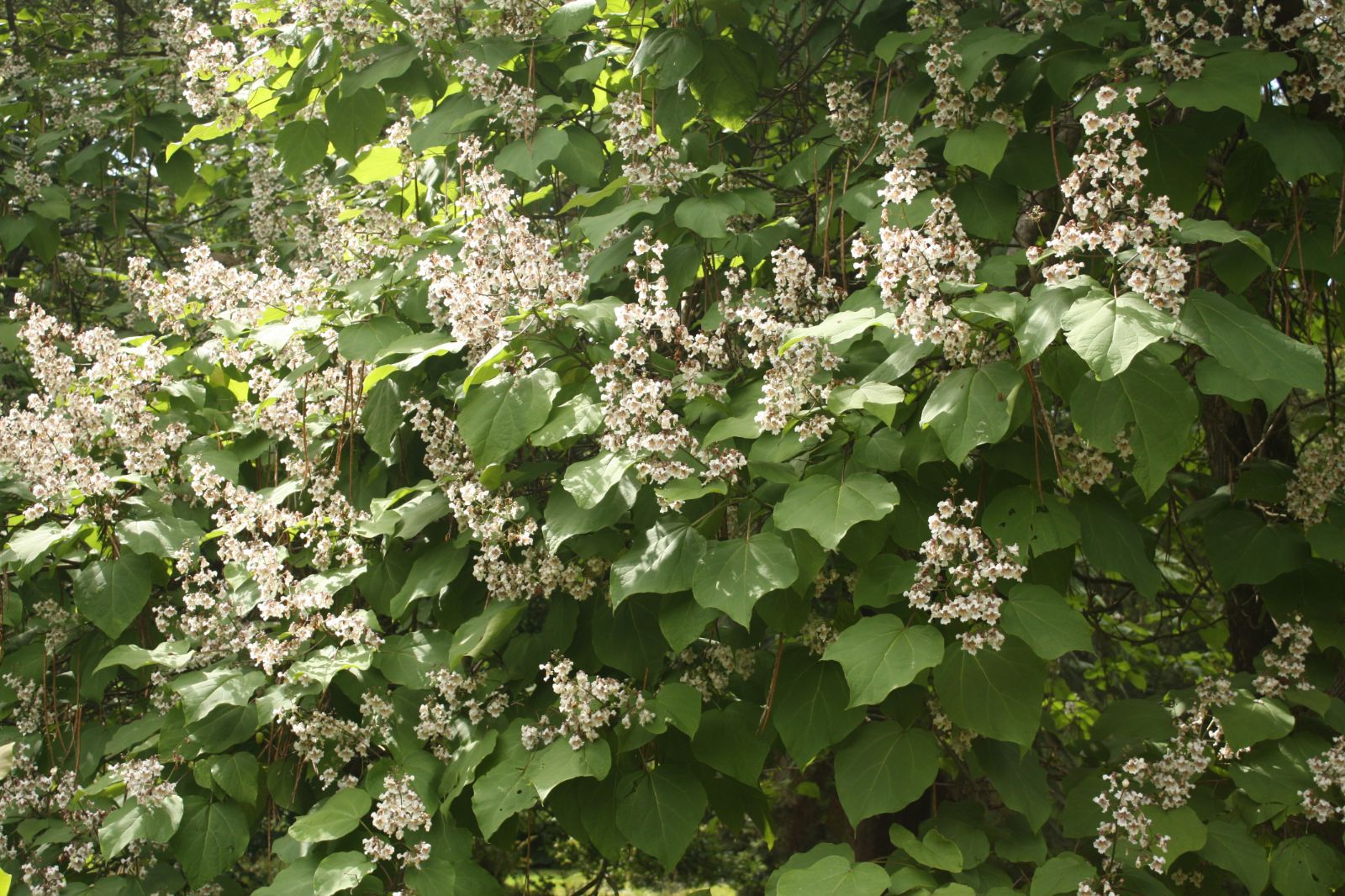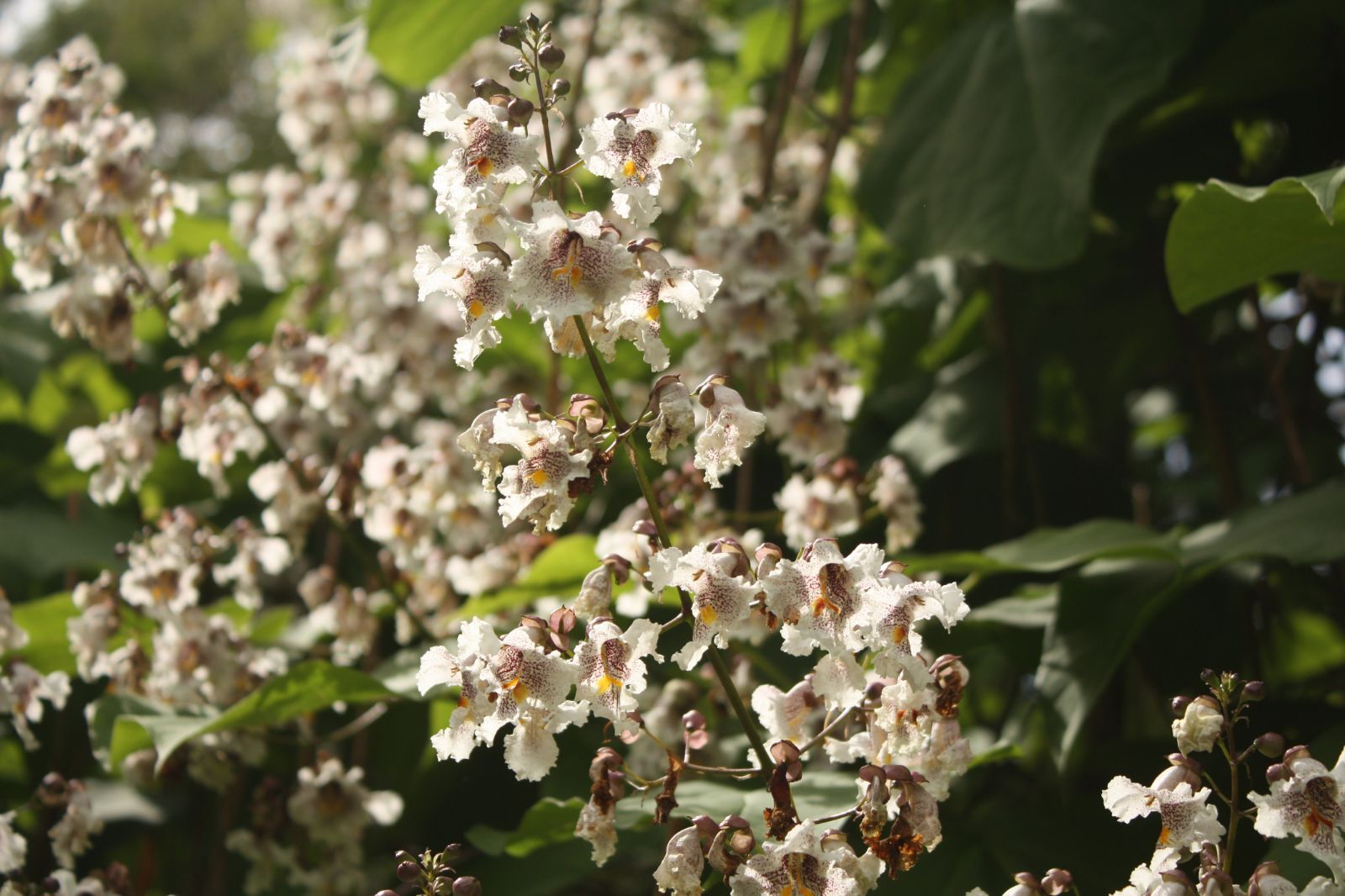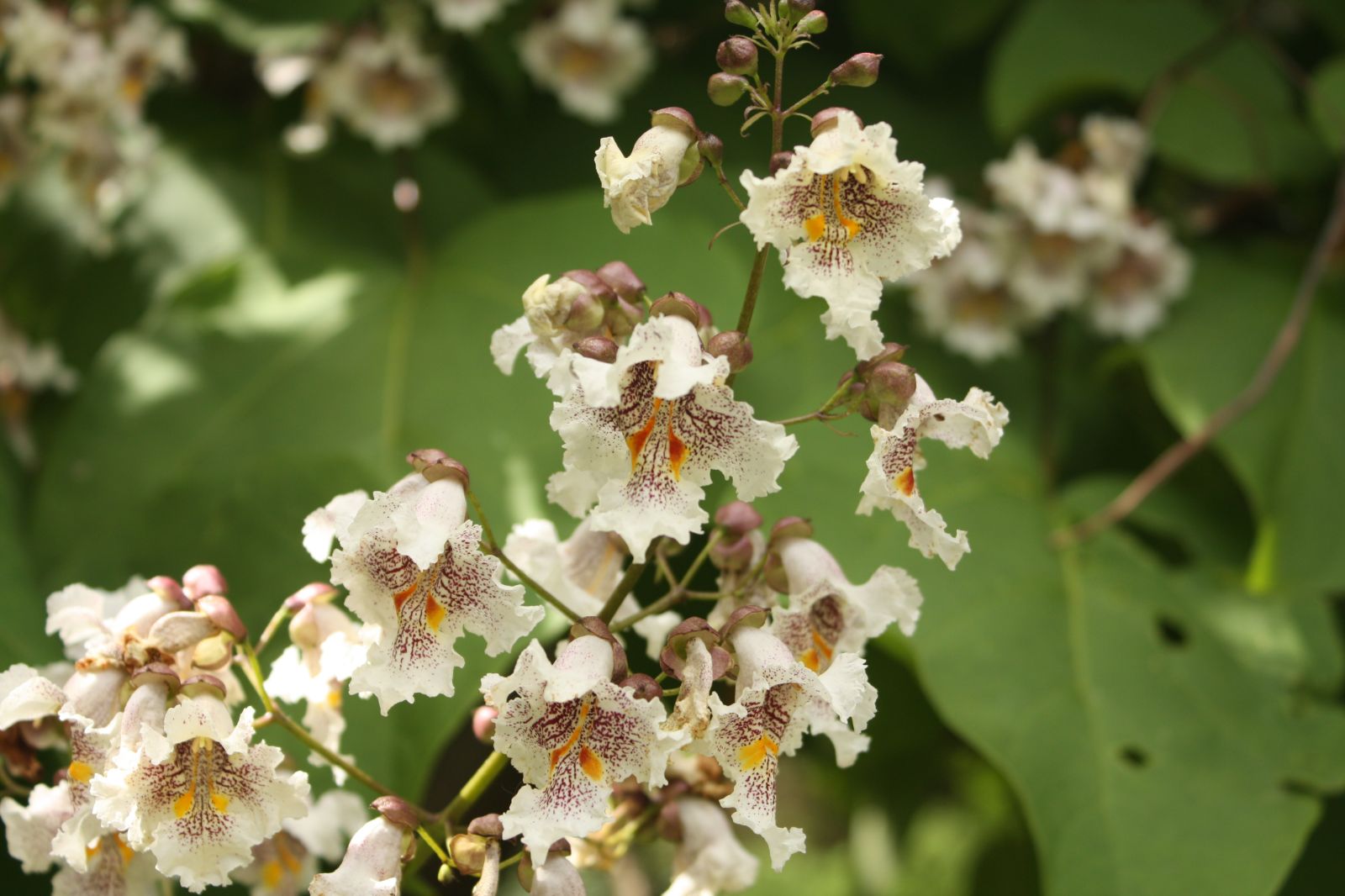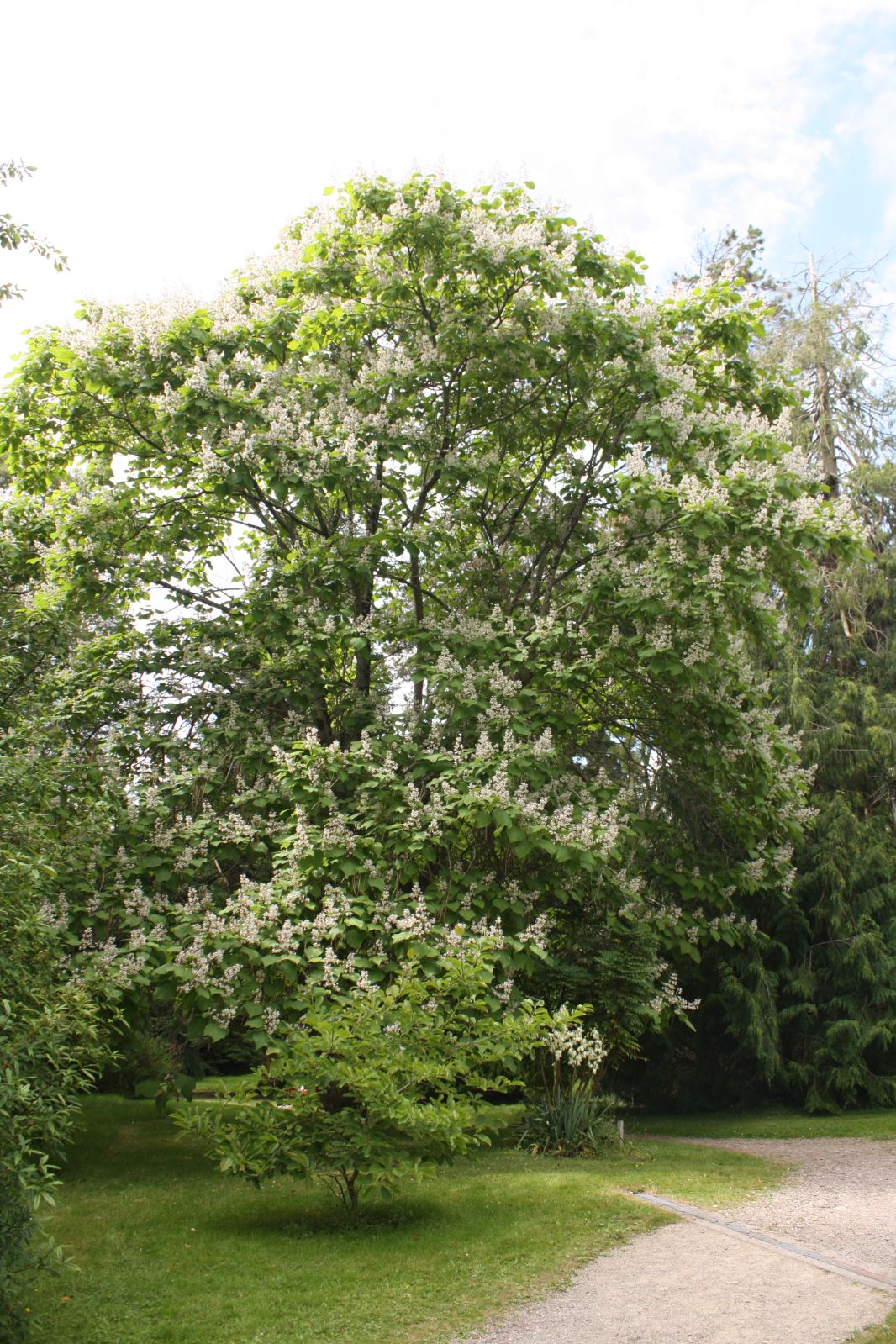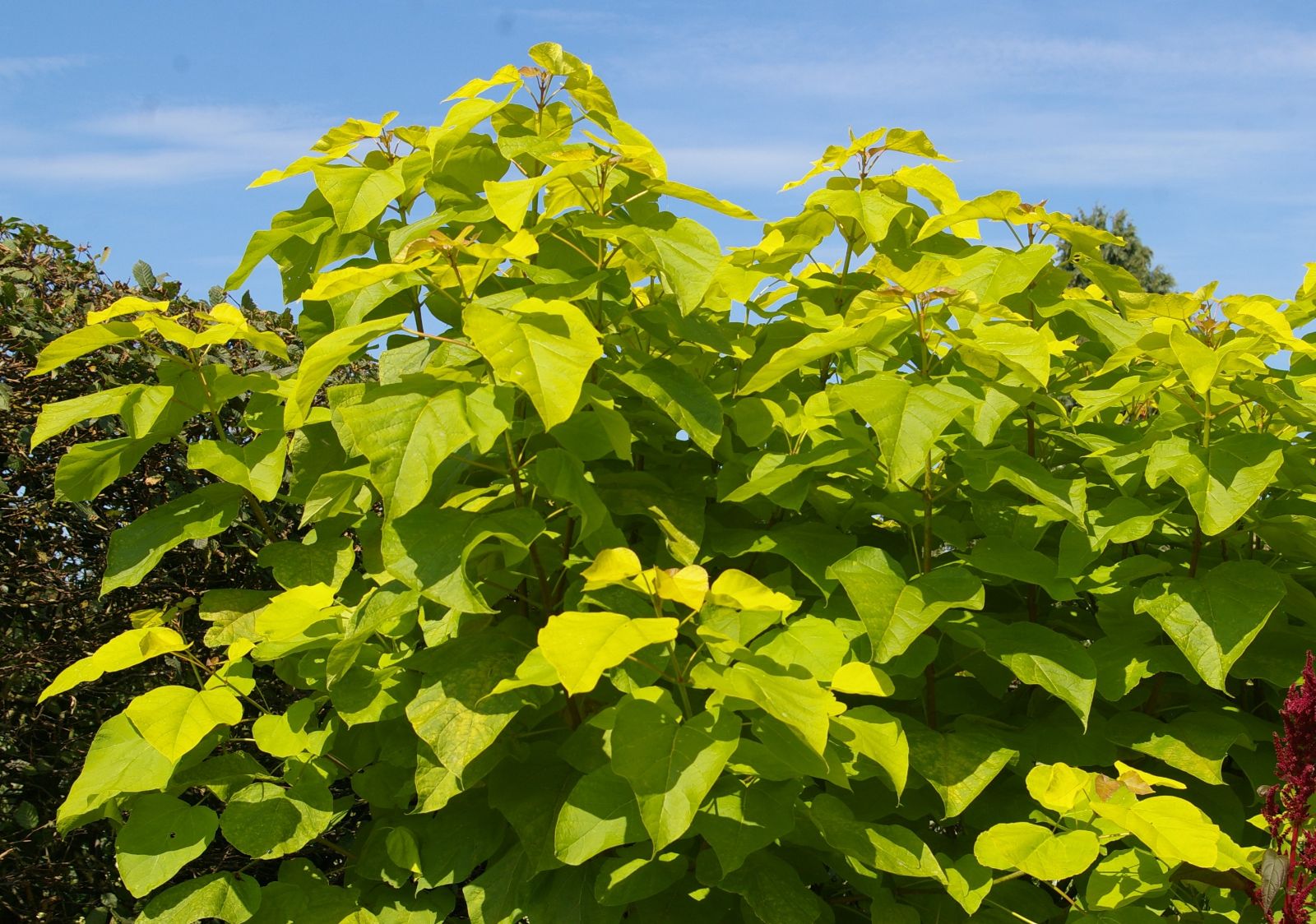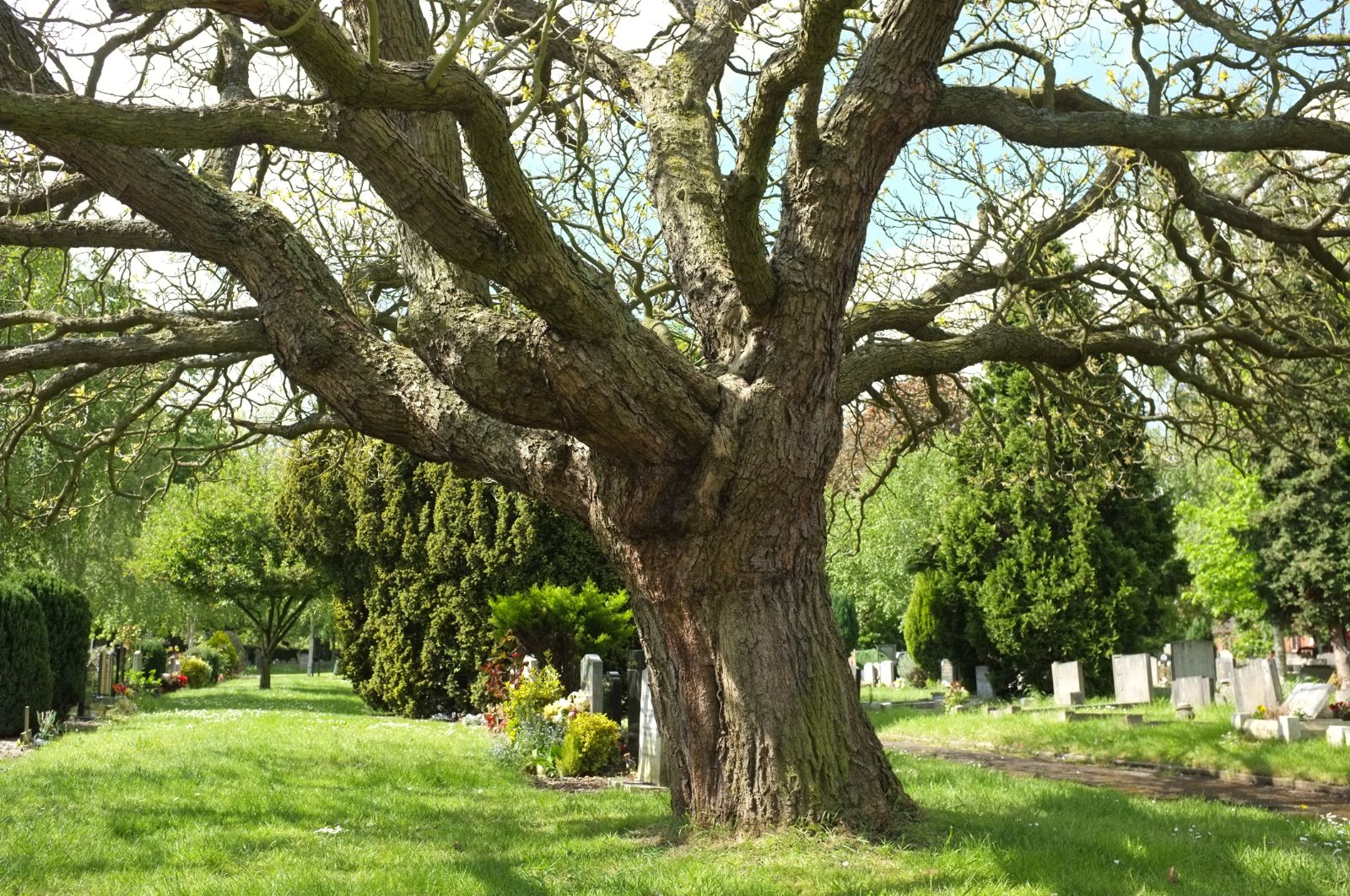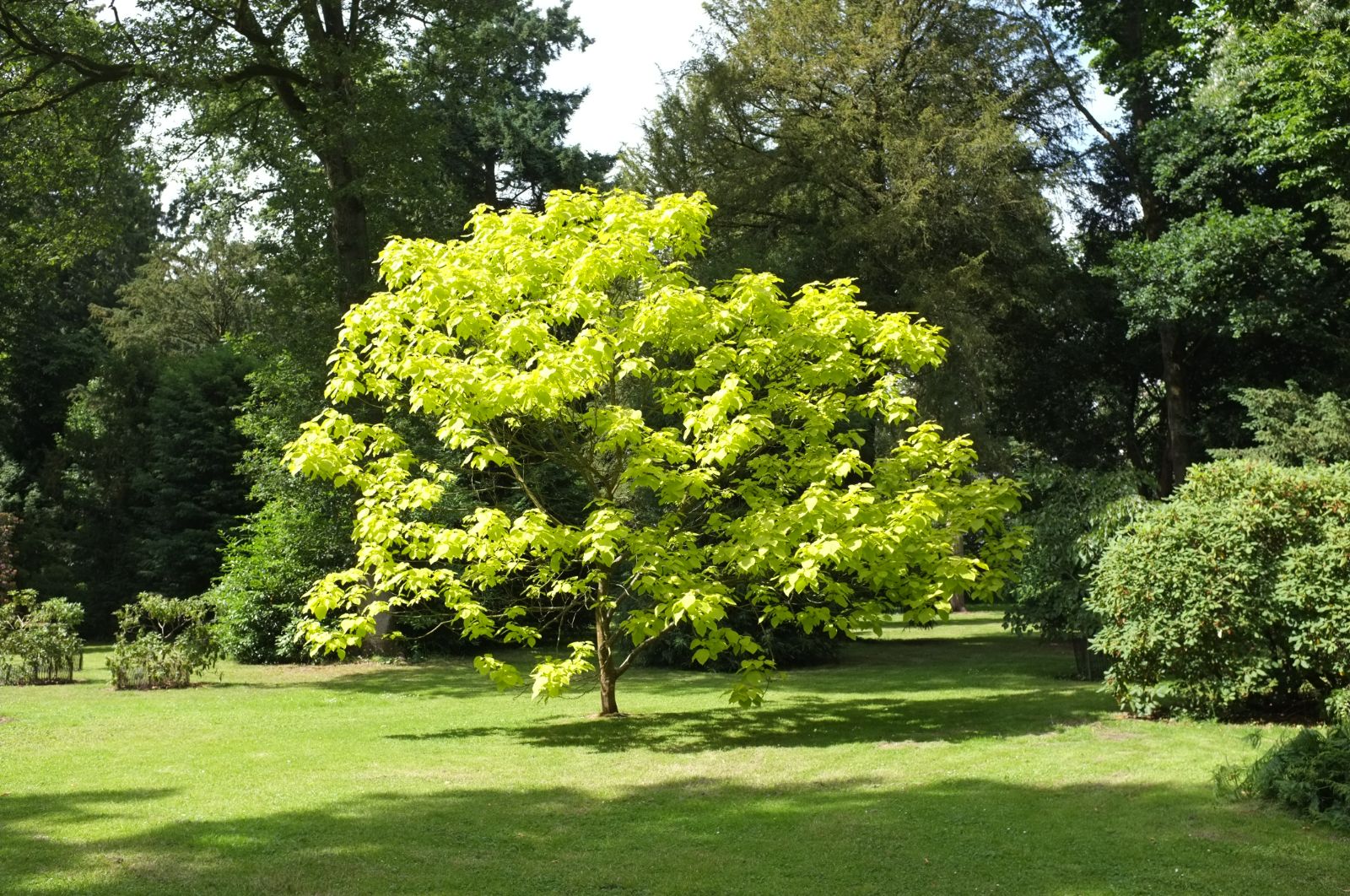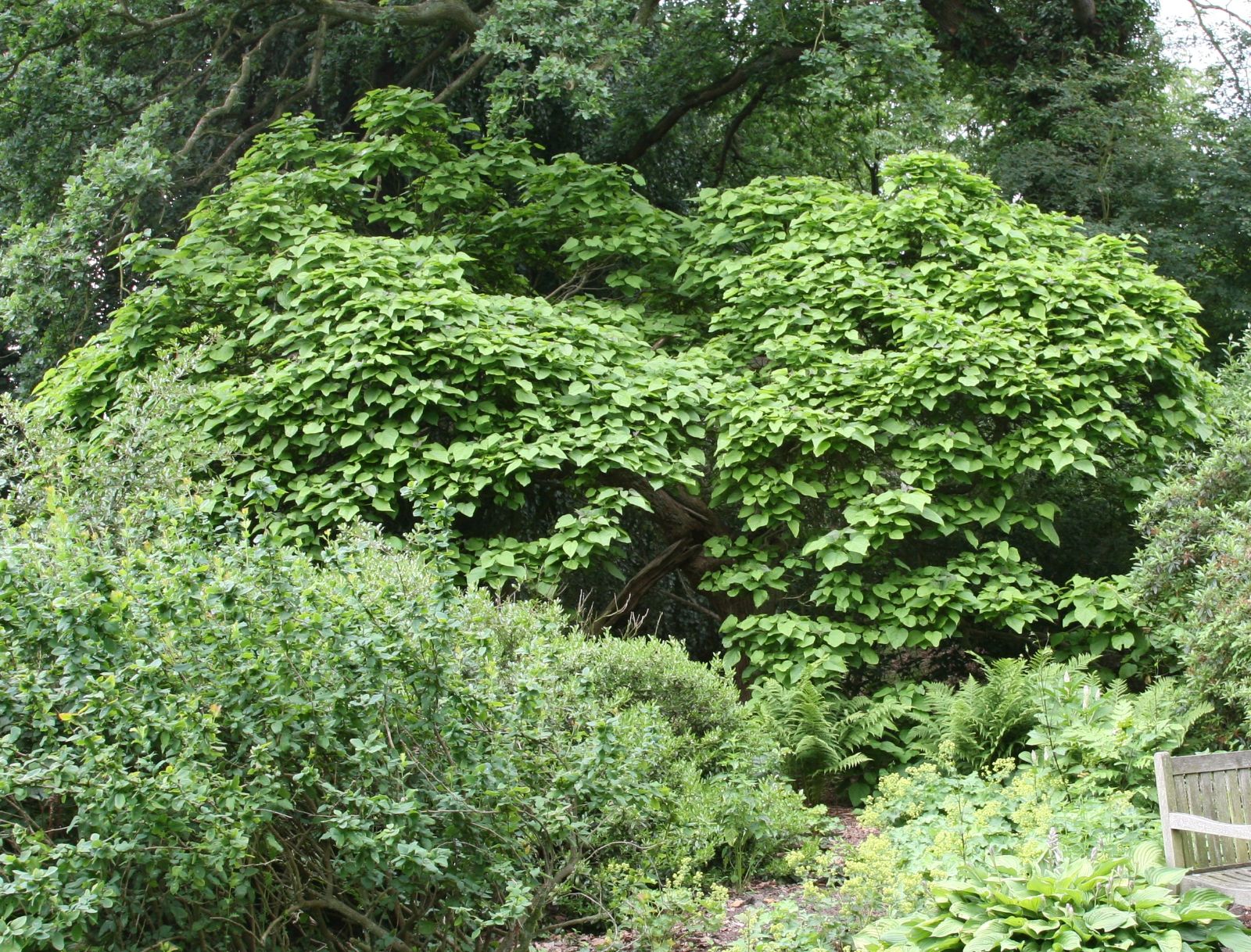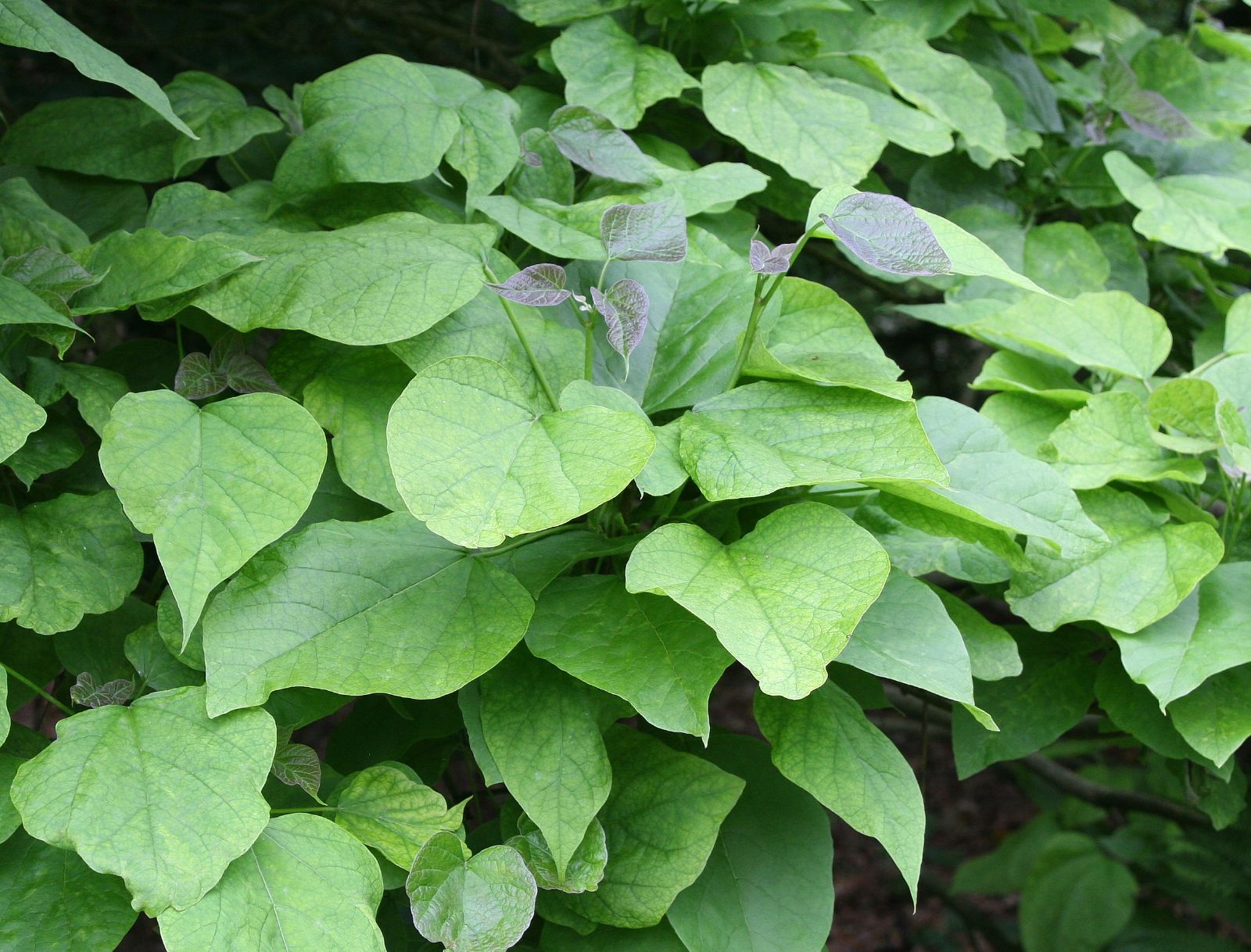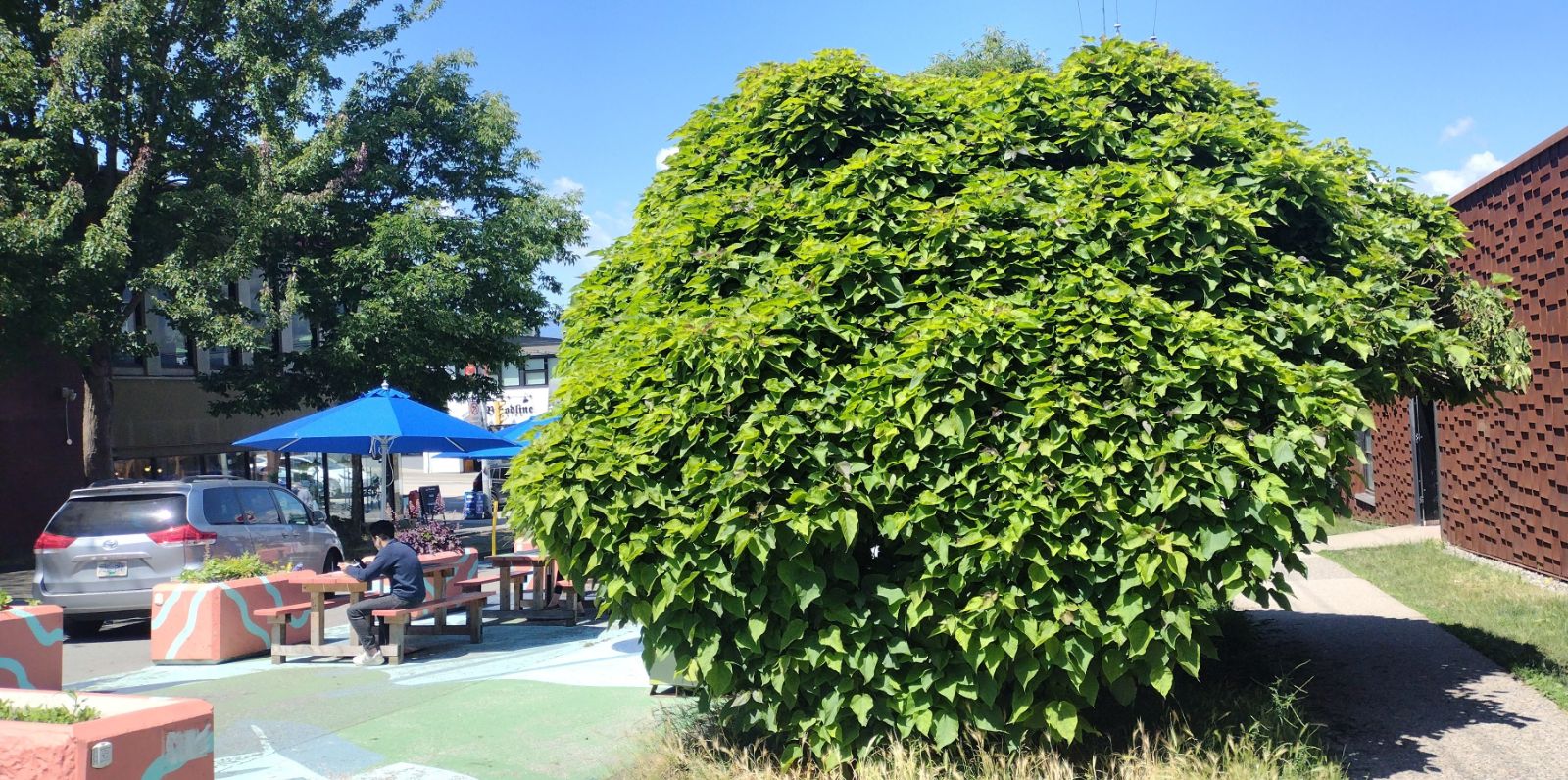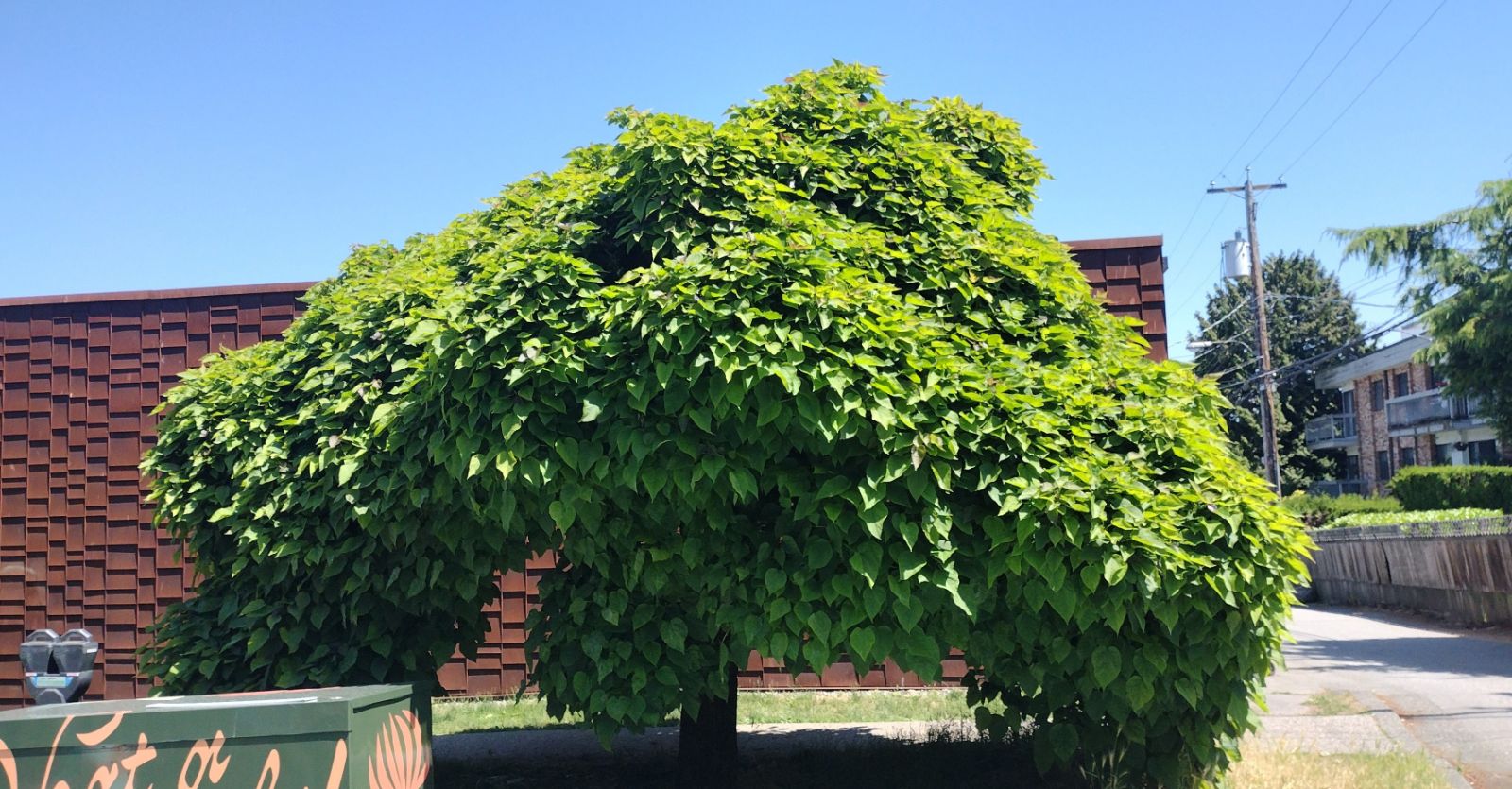Catalpa bignonioides
Credits
Article from Bean's Trees and Shrubs Hardy in the British Isles
Recommended citation
'Catalpa bignonioides' from the website Trees and Shrubs Online (treesandshrubsonline.
A tree 25 to 50 ft high, with a rounded, wide-spreading, much-branched head when grown apart from other trees. Leaves in adult trees broadly ovate, with a heart-shaped base; 4 to 10 in. long, 3 to 8 in. wide (in young trees considerably larger); with short, slender points, sometimes slightly lobed at the sides; light green and ultimately glabrous above, more or less clothed beneath, especially about the midrib and veins, with pale hairs; odour when crushed disagreeable; stalk half to three-fourths as long as the blade. Panicles broadly pyramidal, 8 to 10 in. long and wide, many-flowered. Corolla 11⁄2 in. long and across, frilled at the margin, the tube bell-shaped; white with two ridges and two rows of yellow spots, and numerous purple spots on the tube and lower lobe. Fruit slender, 6 to 15 in. long, round, and about as thick as a lead pencil. Bot. Mag., t. 1094.
Native of the eastern United States; introduced in 1726. It flowers at the end of July and in August, and is at that season the most beautiful of flowering trees. It is hardy, but is best adapted for the south of England. No large garden or park ought to be without one or more specimens, and young ones from seed ought to be always coming on to succeed the older ones, for the species is not particularly long-lived, and frequently declines when forty to fifty years of age. It bears fruit in hot seasons, and a tree densely hung with the long, pendent seed-pods has a curious aspect.
The best-known examples in Britain are those that grow in Palace Yard, Westminster, the largest of which measure 40 × 11 ft (1963). The tallest recorded are: Batsford Park, Glos., 60 × 43⁄4 ft (1963); Wakehurst Place, Sussex, 52 × 41⁄2 ft (1966).
From the Supplement (Vol. V)
specimens: Palace Yard, Westminster, the largest in girth 111⁄2 ft and the tallest 45 ft (1969); Regent’s Park, London, 36 × 91⁄2 ft at 3 ft (1981); St James’s Park, London, 56 × 9 ft (1982); Wakehurst Place, Sussex, 55 × 51⁄4 ft (1973).
cv. ‘Aurea’. – specimens: Dulwich Park, London 36 × 53⁄4 ft (1976); Bath Botanic Garden, 30 × 71⁄4 ft (1984).
'Aurea'
Those who admire yellow-leaved trees will not find a more striking one than this; its leaves are wholly of a rich yellow, which does not become dull or greenish as the season advances, but rather improves in colour. There are fine examples in the Sunningdale Nurseries, Windlesham, Surrey, and in the Jepson Gardens, Leamington Spa.
'Koehnei'
Leaves yellowish green in the centre, with a wider margin of yellow.'Nana'
A dwarf form 3 to 6 ft high, bushy, with smaller leaves and said rarely or never to flower. Of French origin, around 1850. In the U.S.A. a dwarf form is top-grafted to make a small weeping specimen, but whether this is the same clone is not certain.There is also a worthless variety with leaves blotched yellowish white.

